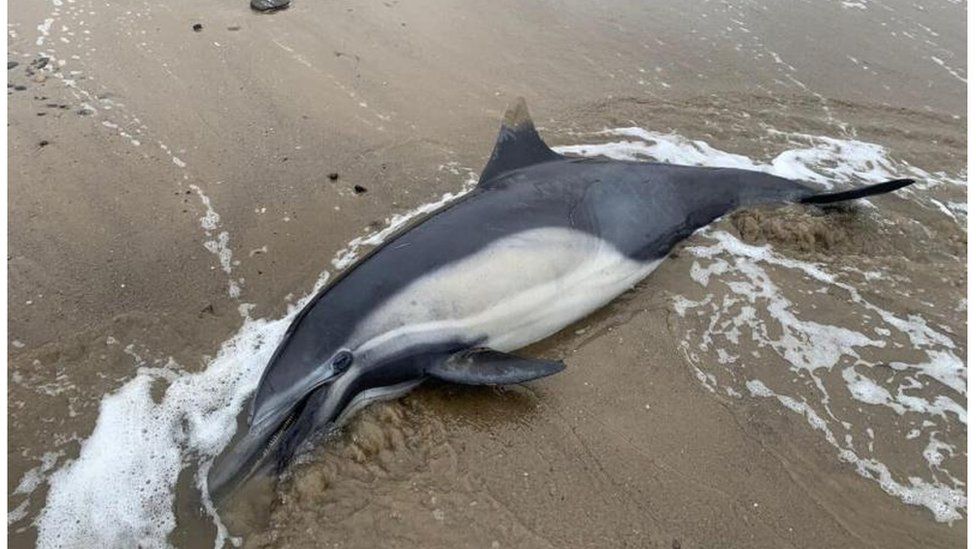ARTICLE AD BOX
 Image source, Channel Islands Marine & Wildlife Institute
Image source, Channel Islands Marine & Wildlife Institute
A dolphin casualty on a California beach, in a picture from the Channel Islands Marine & Wildlife Institute
By Madeline Halpert
BBC News, New York
Toxic algal blooms are killing hundreds of sea lions and dolphins along the coast of California's southern beaches.
More than 1,000 marine animals have become sick or died in June, according to the National Oceanic and Atmospheric Administration (NOAA).
Experts say algal blooms pose a seasonal issue, but climate change may be worsening the problem.
Rescue groups are getting more than 200 reports of marine mammals in distress each day.
"I've heard of a number of people walking the beaches who have seen [sick] animal after [sick] animal," said David Caron, a biological sciences professor at the University of Southern California.
"Animal rescue groups are scrambling to try to get boots on the ground to get the animals protected."
Sea birds, dolphins and sea lions in particular are becoming ill from the rapid growth of certain species of algae, which produce a toxin called domoic acid.
Harmful algal blooms work by disrupting food webs, Dr Caron said. Creatures such as shellfish, anchovies and sardines consume the toxins before then being eaten by larger marine mammals.
"They eat a meal of those highly toxic fish and then they become toxified themselves, and if they get enough of that material, it of course can kill them, which is happening now," he said.
Santa Barbara and Ventura counties in Southern California have been hit especially hard, according to the NOAA.
The Channel Islands Marine & Wildlife Institute, which helps rescue and treat sick animals, said it was receiving more than 200 reports of marine mammals in distress each day.
"We are doing the best we can to keep up with the intense pace," institute co-founder Ruth Dover said in a statement.
When domoic acid affects marine mammals, they can become disoriented or even convulse and die under water.
Image source, Channel Islands Marine & Wildlife Institute
Image caption,Sick dolphins and sea lions pictured on a California beach
The blooms can pose a danger to humans as well. People can become sick if they consume fish packed with the toxins, though the California Department of Public Health monitors for these levels and closes shellfish beaches when necessary, Dr Caron said.
Humans may also attempt to approach larger mammals like sea lions and dolphins if they see them stranded on the beach, but the animals may become aggressive because of the toxins.
People should avoid the marine creatures and call rescue organisations, which have been able to save some animals by capturing them, feeding them, and giving them liquids until they can flush the toxins out of their system, Dr Caron said.
Algae usually blooms between March and June in California, but the blooms may be peaking later this year because of its long and rainy winter.
Experts say that not all species of algae produce harmful toxins, but the ones that do may be expanding to new areas because of climate change.
This is because as water temperatures rise, more areas become habitable for harmful algae blooms, which tend to form in warmer water.
Scientists are still working to untangle the effects of climate change on organisms living in coastal waters, Dr Caron said.
"But we have a fair amount of evidence, especially in inland waters, that climate change is exacerbating some of the problems that we're seeing with harmful algae," he said.

 1 year ago
83
1 year ago
83








 English (US) ·
English (US) ·